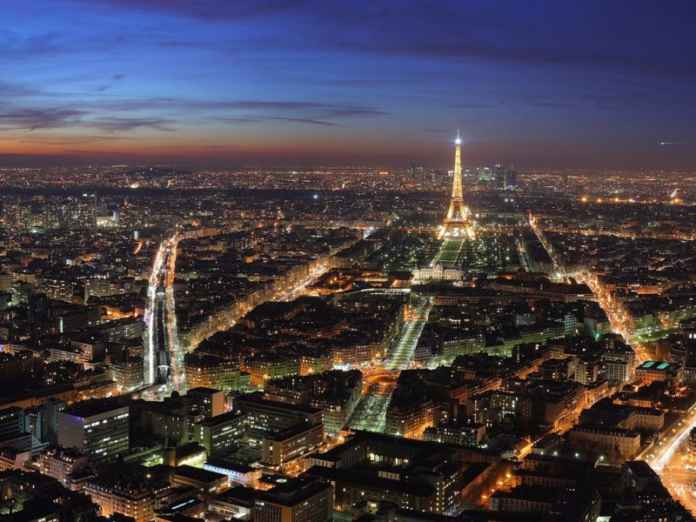Located in a country which is located in Western Europe (France). Paris has the reputation of being the most beautiful and romantic of all cities, with historic associations and remaining vastly influential in this kingdom of culture, art, fashion, food and design. There are 5431 streets across the city, each one with a story of its own, relating to the history of France, its artists, scientists and saints.
As surprising as it may be, it is possible to walk to most of Paris’s sites. It won’t take you more than a few hours to walk from the Bastille area to the Eiffel Tower. If you don’t feel like walking, public transport in Paris is second to none. This is where you will find the Universities and the well-known Sorbonne.
Peak Season:
The winters in Paris are a season of light and celebration, and if you visit in the fall you can explore events like the Montmartre Wine Harvest which bring the city to life in a brighter way. Summers are hot and enjoyably not good as per a tourist’s perceptive. April in Paris… Is exactly that when you should visit. As that will be the best time for a romantic trip, but the actual truth is that you have a pretty good chance of getting a cold and rainy weather, so be prepared.
Sights of attraction:
Eiffel Tower: The Eiffel Tower in Paris needs no introduction, as it is one of the most well known monuments in the world visited by more than 5 million people each year. Wildly unpopular when it was unveiled and nearly torn down, the tower was finally embraced as the symbol of a modern and elegant Paris. And when one visit this phenomenal beauty of France it feels like being up with the clouds and at the top of the world. But before you start making your way up, check out the rates: they’ve a price for every type of visitor (adults, disabled people, children under 4, 12 to 24 year olds, etc.) and depending on how you want to go up the tower (lift or stairs). Whether you’re visiting as a family or a group, the prices will be different.
Louvre Museum: Louvre Museum or The Louvre is originally a royal palace and it became a public museum at the end of the 18th century. It is one of the world’s biggest museum and have a vast collection of around 35000 objects related to art and culture of France. The latest addition to the Louvre Museum was the construction of the Glass pyramid in 1989, which is also used as the main entrance to the museum. Louvre is just not a museum it is a whole world of art and history in itself and being here is worth making an effort, because in return you get an inspiring and reviving experience.
Opera Garnier: If you are a opera fan or even a music lover then you can’t find a better place than Opera Garnier also know as Paris Opera or Palais Garnier. Having a capacity of 2,200 seats, the imposing Opera Garnier is the gem of Paris’ culture and music. It’s architectural treasure make this place a treat to eyes and the music brings it up as an essential spot for the city’s ballet and classical music scene. It’s also one of the crowning attractions of the Opera-Haussmann neighborhood, one of Paris’s most desired shopping districts and the hub of major department stores like Galeries Lafayette and Printemps.
Places to change money in Paris:
One can change money at airports, banks, travel agencies, and at major hotels; the latter generally have the worst rates. It is always a good idea to travel with some foreign currency and picking up some euro before arriving in France, if you come from a country that hasn’t got the euro, is recommended.
Many tourists nowadays simply withdraw local currency via ATMs using their debit card, or even their credit card, and an increasing number of banks make this possible throughout France. Look for participating schemes, like Switch and Maestro, Visa, and MasterCard. Although you may be charged a nominal amount by your bank, and possibly the bank you are withdrawing cash from, the banks utilize the commercial exchange rates, meaning a better deal.
Clothes to wear:
Paris is the fashion capital of the world and when you’ll pay a visit then you’ll find out people wearing a variety of clothes, but stylish. In Paris style is the key. After all, this is the city that founded “haute couture” and supports a vibrant designer “knock-off” industry. So it really doesn’t matter that what you wear, the point is that whenever you are in Paris as in summers, winters or autumn wear a trend and carry it with style. If you are worried about the color then Black can never be out of trend in Paris. As a traveler, black has the added benefit of not showing the “wear and tear” of a trip. And if you can’t stand wearing black, try other neutral colors – like beiges, browns, and creams.
Legal Cautions:
Health is very important for travelers and one should also be legally healthy enough to travel. Apply for a free European Health Insurance Card (EHIC) to be eligible for emergency medical treatment in France and make sure it has not expired if you already have one. You should also take out comprehensive travel and medical insurance before travelling.
Concealment of the face is strictly ban in public places in France. This includes any garment or mask that is used to conceal the face. A fine of €150 will be applied on the failure to comply with the ban. Also, forcing someone to hide their face is a crime and is punishable by a year’s imprisonment and a fine of up to €30,000.
You should be a valid passport holder to enter France. Your passport must be valid for the proposed duration of your stay if you are going to stay for up to three months; any additional period of validity on your passport beyond this is not required. British Citizens will not need a visa to enter France. Other passport holders should check the current entry requirements and confirm with the nearest French Diplomatic mission.










